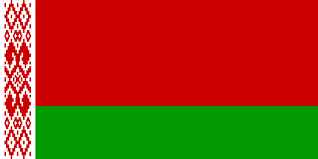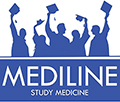Study Medicine in Belarus

The Republic of Belarus
Official Name : Republic of Belarus
President of Belarus : Alexander Lukashenko (1994 – present )
Total Land Area of Belarus : 207,600 km²
Population – 9.498,4 million (on 1 January 2016)
- Life expectancy at birth – 73.2 years
- Population living in cities – 77.6%
- The capital is Minsk – 1.959,8 million inhabitants
Ethnicity
| Belarusian | 83.7% |
| Russian | 8.3% |
| Polish | 3.1% |
| Ukrainian | 1.7% |
| Jewish | 0.1% |
Languages spoken in Belarus : Belarusian and Russian
Independence Day : 3 July
Currency of Belarus : Belarusian rouble (Br)
Economic Indicators
GNP (2015) : Br 869702 billion; per capita: Br 91646 thousand
Commodity structure of export (2015):
● Mineral products – 29.9%
● Chemical industry production, rubber – 21.3%
● Cars, equipment and vehicles – 13.8%
● Black, nonferrous metals and products from them – 6.5%
● Articles of food and agricultural raw materials – 16.3%
● others – 12.2%
Location
Belarus is situated in the centre of Europe, and has international borders with five countries:
- Poland
- Lithuania
- Latvia
- Russia
- Ukraine
Languages of Belarus
Belarusian and Russian are the official languages of Belarus. Other languages such as Polish, Ukrainian and Hebrew are spoken within local communities.
Higherr education in Belarus
Belarus has one of the highest student-to-population ratios in Europe. The higher education system in Belarus is seen as prestigious due to its high quality and affordability.
There are four main types of higher education establishments to choose from, which can be either private or state operated:
- Classical university
- Profile university or academy
- Institute
- Higher college
Most courses run for 5 years and students can choose to study full time, at evening classes or by correspondence.
Grants are available for full-time students and scholarships are awarded to very gifted students.
All higher education establishments are governed by the Ministry of Education in Belarus.
In May 2015 Belarus officially joined the Bologna Process – the European Higher Education Area.
The country of Belarus is divided into six administrative districts, each centred on a major city:
- Brest region
- Gomel region
- Grodno region
- Minsk region
- Mogilev region
- Vitebsk region
More than 6000 foreign students study at higher education institutions and universities in Belarus every year. In general higher education fees for foreign nationals range from 3700-5000 USD, depending on the subject and the institution. There are more than 50 higher education establishments in Belarus.
Belarus people
The people of Belarus are a kind, friendly and good humoured nation. The patience and peacefulness of the Belarusian people has been determined by the nation’s history that has been darkened by endless wars which the Belarusians did not start, but fell victim to. Belarus is welcoming to all visitors and interested in sharing its culture, traditions and sense of community with them.
Ethnic Belarusians make up more than 80% of the population. But because of the History of Belarus, many other nationalities have also settled in the country, many of whom have been established for several generations.
Here are the main minority groups that make up the people of Belarus
- Russians (8.2%) are always lived in the region, with a large influx into the country after the Second World War
- Poles (3.1%) have lived in the western side of the country for centuries
- Ukrainians (1.7%) –the largest influx came in the 18th and 19th centuries
- Jews (0,13%) :the first Jews settled in Belarus in the 15th century, but emigration to Israel and other states since the 1980s means that the Jewish population of Belarus is now less than 30,000
Other significant minority groups in Belarus include Tatars, Roma, Lithuanians and Letts.
Why Study Medicine in Belarus ?
- Easy admission & visa process
- High exposure to clinical practice with highly equipped multi-profile hospitals.
- The tuition fee and the living expenses are comparatively lesser than other countries. This has made Belarus an economical educational destination.
- Minimum requirement – GCE A/L 2C,1S in bio stream & C pass for english or equivalent A/L Results in London/Cambridge exams
- Total in English medium
- Safe university hostel accommodation with 24 hours security
- Payments can be made in installments
- Can apply with pending results
- Peaceful country, No racism like in Russia
- Separate floors for girls & boys
- High act 16 pass rate
- Recognized by WHO, medical councils of Srilanka, UK, EU, USA, Australia
- Opportunity to work in those countries following completion of degree
- Easy visa process to visit Europe in summer vacations (July/August)
- Semester fee 2100USD upwards
Admission Pattern - Belarus
- The academic year in Belarus Medical Universities starts from September.
- There are two semesters in an academic year; September to January and February to June. First semester examinations are held usually in January followed by second semester in June.
- Students enjoy two types of vacations in their curriculum. It is winter vacation from 15th January to 7th February and summer vacation from 1st July to 31st August.








